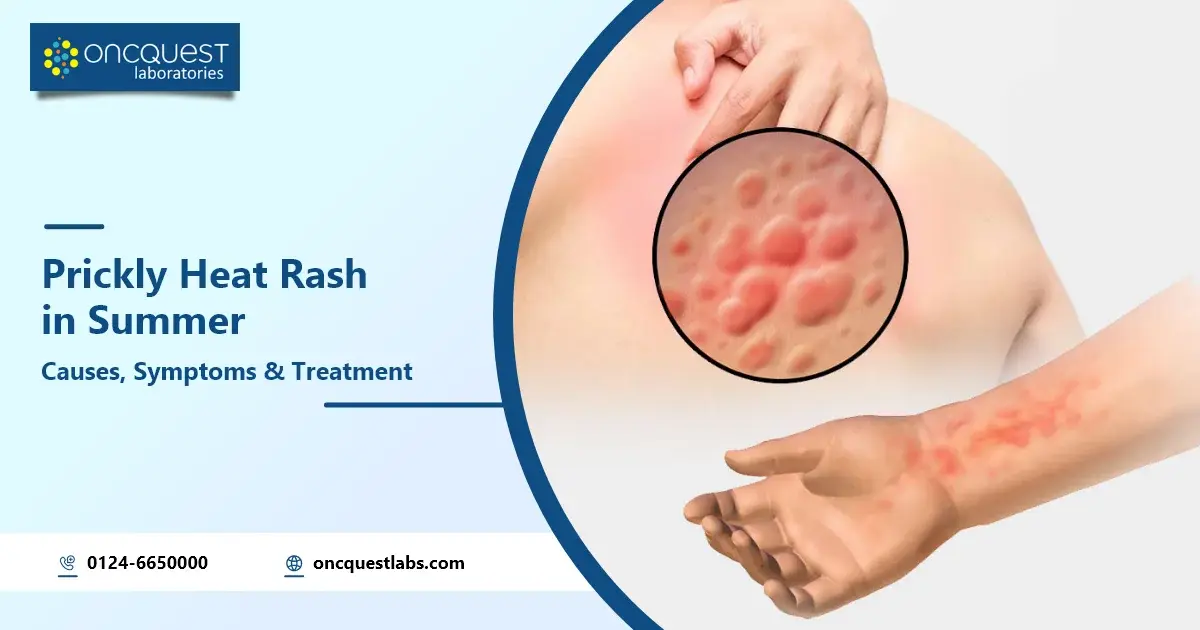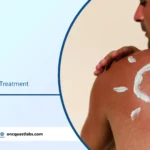Ah, the glorious days of summer, where the sun kisses our skin and the warmth envelops us like a comforting embrace. But, alas, along with the joys of summer comes an unwelcome visitor – prickly heat rash. As we bask in the sunshine, our skin sometimes rebels with tiny, prickling eruptions that seem to have a mind of their own. In this blog journey, let’s unravel the mysteries of prickly heat – exploring its causes, deciphering its symptoms, and uncovering the secrets to soothing treatment. So, buckle up as we embark on a quest to understand and conquer the pesky irritations that summer can bring!
Contents
Understanding Prickly Heat
Prickly heat, also known as miliaria, is a common skin condition that occurs when sweat becomes trapped in the sweat ducts, leading to inflammation and the development of small, itchy bumps on the skin. This often happens in hot and humid conditions when the body produces more sweat. The trapped sweat causes a blockage in the sweat ducts, leading to the characteristic rash. Prickly heat can manifest in different forms, including miliaria crystallina, miliaria rubra, and miliaria profunda, each with its own characteristics and severity. While it’s not a serious condition, it can be uncomfortable, and understanding its causes and symptoms is crucial for effective prevention and management.
Causes of Prickly Heat
The causes of prickly heat are primarily linked to sweat and heat exposure. Here’s a breakdown of key factors:
- Excessive Sweating: When the body produces more sweat than usual, especially in hot and humid weather, the likelihood of sweat ducts becoming blocked increases.
- Blocked Sweat Ducts: Sweat ducts can get clogged, preventing the sweat from reaching the surface of the skin. This blockage leads to the formation of small, red bumps characteristic of prickly heat.
- Humid Conditions: High humidity contributes to reduced evaporation of sweat, making it harder for the body to cool down and increasing the chances of sweat duct obstruction.
- Overdressing: Wearing tight or synthetic clothing can trap heat and sweat close to the skin, exacerbating the risk of developing prickly heat.
- Physical Activity: Engaging in activities that induce sweating without adequate cooling measures can contribute to the occurrence of prickly heat.
Understanding these causes is crucial for taking preventive measures and managing prickly heat effectively.
Symptoms of Prickly Heat
The symptoms of prickly heat, or miliaria, typically manifest as:
- Tiny Bumps: Small, red or pink bumps on the skin’s surface, resembling tiny blisters. These bumps may be surrounded by areas of redness.
- Itching and Irritation: The affected area may feel itchy and irritated due to the inflammation caused by trapped sweat.
- Prickling Sensation: A prickling or tingling sensation on the skin, especially in areas prone to friction or sweating.
- Increased Discomfort in Heat: Symptoms often worsen in hot and humid conditions or during physical activity that induces sweating.
- Clustered Rash: Bumps may appear in clusters, often in body folds, underarms, chest, back, and areas where clothing causes friction.
- Possible Pustules: In more severe cases, pustules (fluid-filled bumps) may develop, indicating a deeper blockage of sweat ducts.
Recognizing these symptoms is essential for early identification and prompt management of prickly heat. If symptoms persist or worsen, seeking medical advice is recommended.
Treatment of Prickly heat
The treatment of prickly heat involves relieving symptoms and preventing further irritation. Here are some effective approaches:
- Cooling the Skin:
- Take cool showers or baths to lower the skin’s temperature.
- Use a gentle, mild soap to cleanse the affected areas.
- Loose and Breathable Clothing: Wear loose-fitting, breathable clothing to allow better air circulation and reduce friction.
- Stay Cool:
- Spend time in air-conditioned or well-ventilated environments.
- Use fans to enhance air circulation.
- Powders: Apply talcum powder or cornstarch to absorb excess moisture and ease friction.
- Avoid Sweat-inducing Activities: Temporarily avoid activities that cause excessive sweating until the rash improves.
- Hydration: Stay well-hydrated to support overall skin health.
- Over-the-Counter Creams: Consider using over-the-counter creams or ointments containing calamine or hydrocortisone for relief from itching and inflammation.
- Avoid Irritants: Steer clear of products that may further irritate the skin, such as harsh soaps or perfumed lotions.
If symptoms persist or worsen, seeking advice from a healthcare professional is recommended. They may provide additional treatments or address any underlying concerns.
Who is at risk?
Certain factors may increase the risk of developing prickly heat. Individuals who are more susceptible include:
- Infants and Young Children: Babies and young children have underdeveloped sweat ducts, making them more prone to prickly heat.
- Adults in Hot and Humid Climates: People living in or visiting areas with high temperatures and humidity are at an increased risk.
- Individuals Engaging in Physical Activity: Those participating in strenuous physical activities that induce sweating are more likely to experience prickly heat.
- Overdressing: Wearing tight or synthetic clothing can trap heat and sweat, raising the risk of sweat duct blockage.
- Bedridden Individuals: People who are bedridden or immobile for extended periods may be susceptible, as constant pressure and lack of movement can contribute to sweating and friction.
- Obese Individuals: Excess body weight can lead to increased sweating and friction, creating conditions favorable for prickly heat.
Understanding these risk factors can help individuals take preventive measures to reduce the likelihood of developing prickly heat.
Conclusion
In conclusion, while the glorious days of summer beckon us to embrace the warmth and sunshine, the unwelcome companion of prickly heat rash often tags along. Understanding that this skin condition arises from blocked sweat ducts in hot and humid conditions is key to both prevention and management.
Recognizing the symptoms, such as tiny bumps, itching, and discomfort, allows for early intervention. Cooling the skin, wearing breathable clothing, and staying hydrated are simple yet effective measures to alleviate symptoms.
Certain groups, including infants, individuals in hot climates, and those engaging in strenuous activities, are more prone to prickly heat. Tailoring preventive strategies to these risk factors can significantly reduce the likelihood of experiencing this common summer woe.
So, as you revel in the joys of summer, armed with knowledge about prickly heat causes, symptoms, and treatments, take the necessary steps to keep your skin cool, comfortable, and rash-free. Here’s to a summer filled with sunshine and skin that remains as smooth as the season itself!
Frequently asked Questions
Q1: How do you treat summer heat rash?
A1: To alleviate summer heat rash, keep the affected area clean and dry. Wear lightweight, breathable fabrics, and consider using talcum powder to reduce friction. If irritation persists, consult a healthcare professional.
Q2: What is the best way to treat prickly heat?
A2: To treat prickly heat, stay cool and dry, avoid tight clothing, and take cool showers. Applying calamine lotion or aloe vera can also soothe the irritated skin. If symptoms persist, seek medical advice.
Q3: What is the cause of prickly heat rash?
A3: Prickly heat, or heat rash, occurs when sweat ducts become blocked, trapping sweat beneath the skin. This blockage leads to inflammation and the characteristic red, itchy rash, commonly triggered by hot and humid conditions.




![Blood Test for Hair Loss [Male/Female] Blood Test for Hair Loss](https://oncquest-blog.s3.ap-south-1.amazonaws.com/blog/wp-content/uploads/2023/12/12044200/Blood-Test-for-Hair-Loss.webp)
